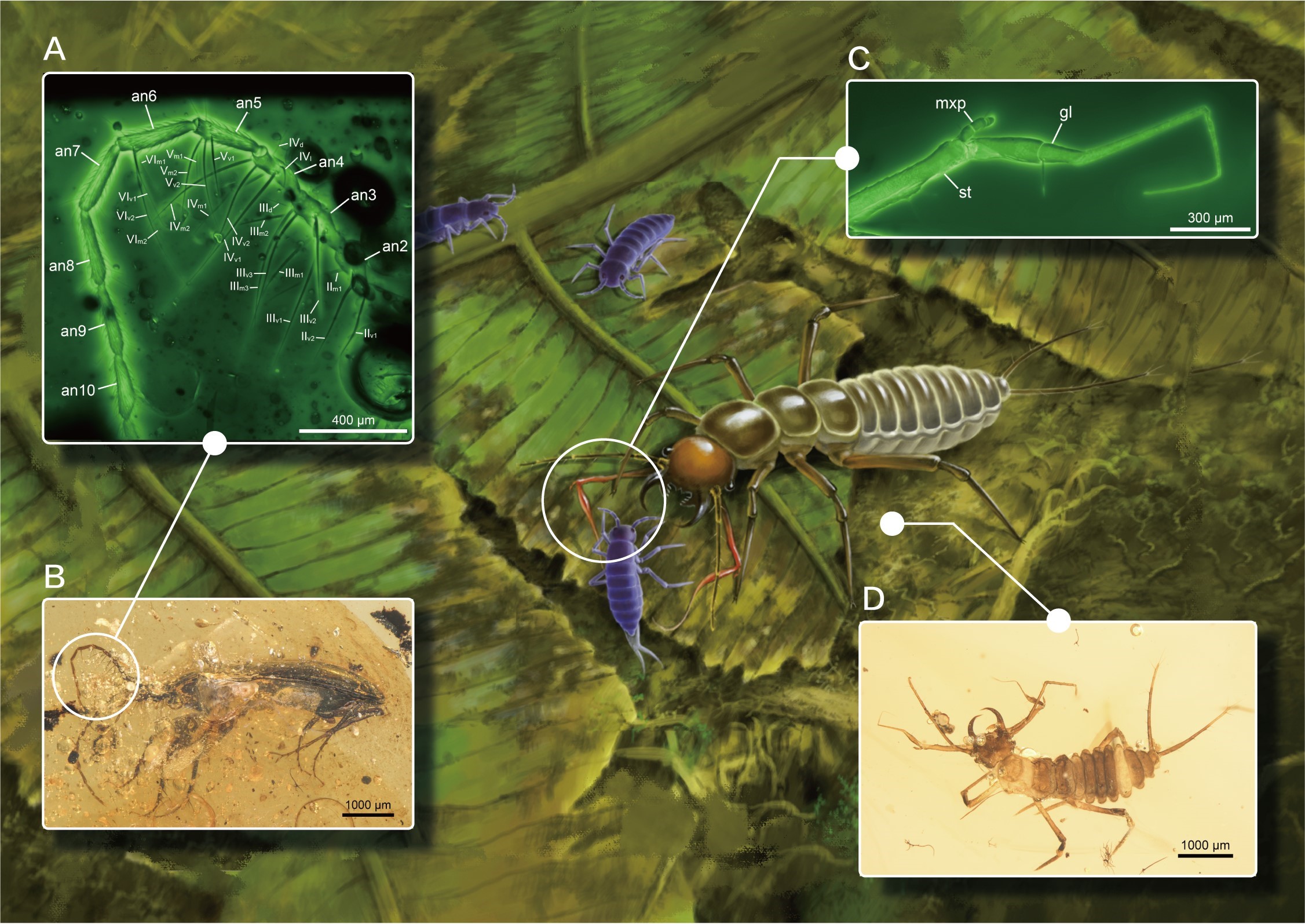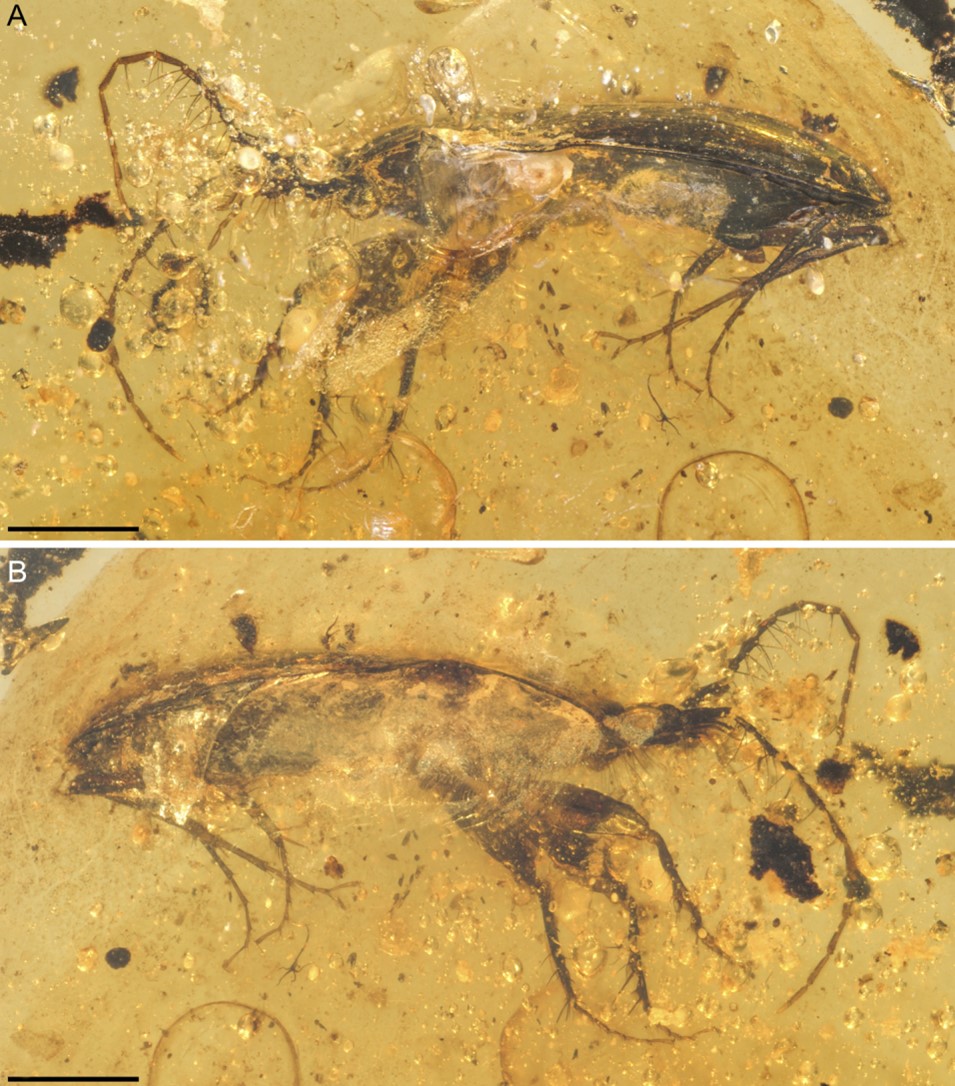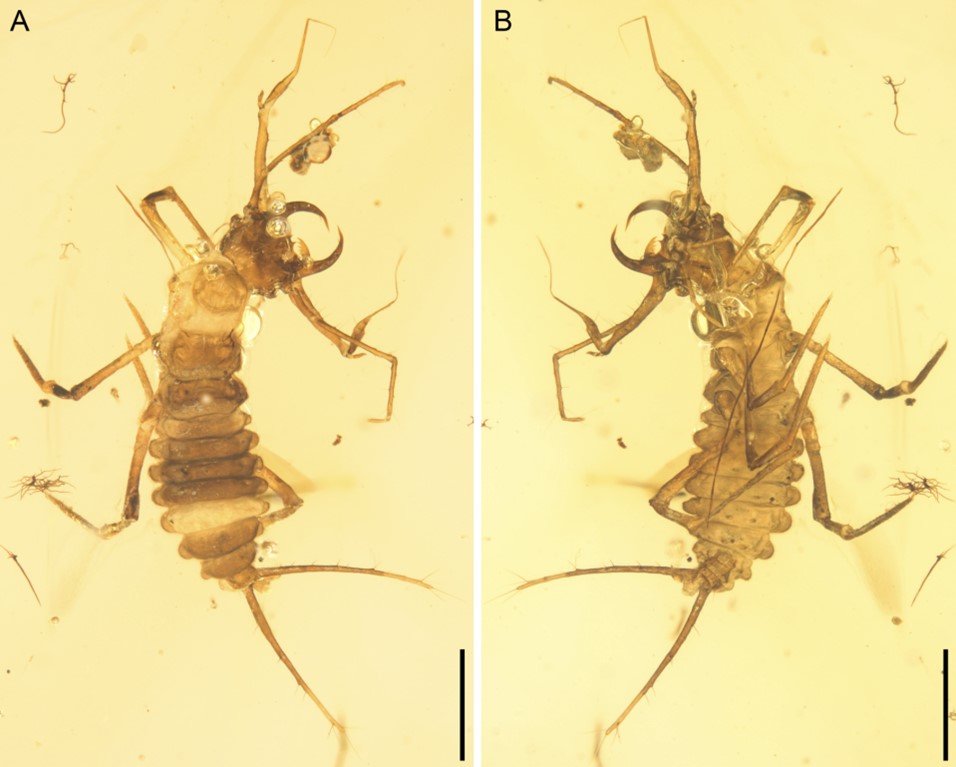The K/Pg mass extinction triggered one of the most profound biodiversity reorganizations in geological history, shaping the structure of modern biodiversity. While many iconic groups, including non-avian dinosaurs, became extinct, new evidence suggests that certain previously overlooked groups not only survived the extinction but also exhibited little change in their morphology and habits.
Recently, Prof. CAI Chenyang from the Nanjing Institute of Geology and Palaeontology, Chinese Academy of Sciences (NIGPAS), and his PhD student, LI Yanda, co-supervised by the University of Bristol, reported adult and larval specimens of Loricera preserved in Cretaceous Burmese amber. These fossils show remarkable similarities to existing species, indicating that their specialized springtail predation behavior has persisted for at least 100 million years. The related findings were published in The Innovation and Palaeoentomology.
Beetles of the Carabidae family are diverse and exhibit a variety of feeding habits. Among them is an interesting genus, Loricera of the subfamily Loricerinae, whose adults and larvae have evolved specialized predatory structures for feeding on springtails (Collembola) in leaf litter. Modern adult Loricera have long, sturdy setae on the basal segments of their antennae. The rapid closure of their antennae traps springtails in a cage formed by the setae, preventing them from leaping away, while long setae on the ventral surface of the head prevent escape.
The newly discovered fossil adult from amber, dating back to approximately 99 million years ago, exhibits an arrangement of setae on its antennae almost identical to that of modern species, suggesting that this fossil species employed the same predation mechanism as modern Loricera, specialized for springtail hunting. Additionally, modern Loricera larvae have long setae on the stipes of their mandibles, which function similarly to the setae on the adult antennae.
These larvae also possess an additional mechanism to improve prey capture efficiency. In most beetles, the galea is short, but in modern Loricera larvae, it is elongated and sticky, enabling them to capture prey and direct it into their mouths. The newly discovered fossil larvae also have long setae on the stipes and elongated galeae, indicating that they likely used a hunting method similar to that of modern larvae.
This new discovery pushes the origin of the Loricera specialized springtail predation mechanism back to 100 million years ago, demonstrating that this complex predatory strategy has remained largely unchanged since its emergence.
The study suggests that both springtails and their predators have exhibited significant evolutionary stasis, both in terms of individual species morphology and community structure. This finding aligns with the hypothesis that low-trophic-level species are less prone to extinction but contrasts with predictions that specialized predatory strategies would be more vulnerable to environmental change.
This research was jointly supported by the National Natural Science Foundation of China and the Second Tibetan Plateau Scientific Expedition.
Reference: Li, Yanda, Tihelka, E., Engel, M. S., Huang, D., Cai, Chenyang (2024). Specialized springtail predation by Loricera beetles: An example of evolutionary stasis across the K-Pg extinction. The Innovation 5(3), 100601. https://doi.org/10.1016/j.xinn.2024.100601.
Li, Yanda, Tihelka, E., Engel, M.S., Xia, F., Huang, D., Zippel, A., Tun, K.L., Haug, G.T., Müller, P., Cai, Chenyang (2024). Description of adult and larval Loricera from mid-Cretaceous Kachin amber (Coleoptera: Carabidae). Palaeoentomology 7(2), 265–276. https://doi.org/ 10.11646/palaeoentomology.7.2.10.

Fig.1 Specialized springtail predation by Loricera beetles from the Cretaceous. (Image by NIGPAS)

Fig.2 Adult Loriceracarsteni beetle from the Cretaceous Burmese amber . (Image by NIGPAS)

Fig.3 Larval Loricera beetle from the Cretaceous Burmese amber. (Image by NIGPAS)
Download:
